(11 products available)




















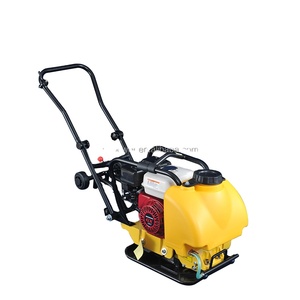
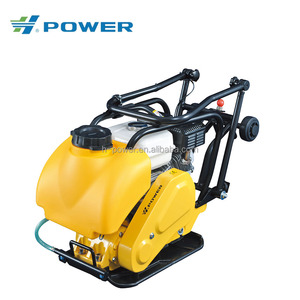
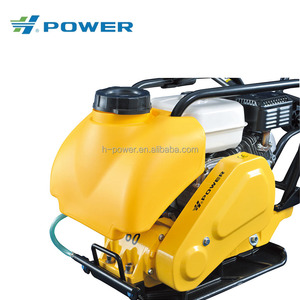
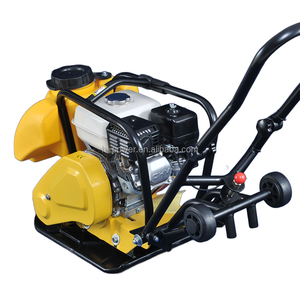
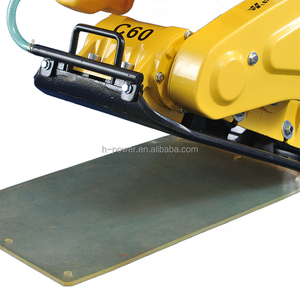
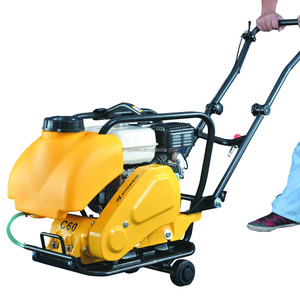



































A Wacker packer is a machine that is mainly used to reduce the empty spaces between dirt or soil to make the ground more solid and stable. Like many other machines, this one comes in different types and models for various uses. Below are some types of the wacker packer.
Air-Driven Packer
This wacker is driven and operated by compressed air. It is used to ram or pack loose material such as gravel or soil. This machine is preferred by many operators because it can be used for extended periods without taking breaks in between. Moreover, it can be used in areas where fuel-powered equipment is prohibited.
Hydraulic wacker packer
This wacker packer works similarly to the air-driven packer. In addition to packing soil, it can also be used to floor concrete to achieve desired levels of firmness and stability. This machine gets its power from a hydraulic system, meaning it can easily be connected to existing hydraulic circuits on job sites.
Plate Compactor
This is the most common kind of wacker used to create backfills and sub-bases, especially in excavation areas. It is mostly used during construction projects. The Plate compactor comes in many sizes and weights to cater to different kinds of projects. Small ones are ideal for working in tight spaces and around utilities, whereas larger ones are perfect for road construction and landscaping.
Forward & Reversible Vibratory Plate Compactors
As the name suggests, the forward plate compactor goes in one direction as the operator controls it. On the other hand, the reversible one can move in both directions. The reversible vibratory plate compactor is more versatile and recommended for more extensive and demanding construction projects.
Jumping Jack Compactor
The jumping jack compactor packs the soil by dropping its weight on the ground repeatedly. Unlike the wacker packer, which has a flat bottom, this one has a rectangular shape and is better off used in narrow trenches and close to vertical walls.
Horsepower:
Wacker stampede packers usually have a horsepower rating within a specific range. Many models are factory-designed with 3 to 5 horsepower gasoline engines. Larger or different-purpose ones might use diesel fuel and have closer to 7 horsepower. This provides enough power to effectively compact soil and bitumen without excessive noise or emissions.
Weight:
The weight of the machine affects how much it can compact material and how easy it is to transport. Wacker packers' operational weights vary but are generally between 100 and 300 kg. Lighter machines around 120 kg are good for smaller jobs, while heavier models closer to 300 kg can compact more thoroughly. Choosing the right weight helps balance compaction ability with portability.
Plate Size:
The size of the base plate determines the area covered while working and how well it vibrates through material. Wacker packers have plate widths from around 30 to 60 cm. Smaller 30-40 cm plates work well for trenches, around utilities, and in tight spaces. Larger 50-60 cm plates are better for compaction on open areas and larger substrates. The plate dimensions allow efficient vibration transmission into the ground for effective soil stabilization.
Fuel Tank:
Wacker packers generally use gasoline or diesel fuel. Gasoline-powered models have a tank capacity of around 3.8 to 5.7 liters, allowing for over 4 hours of continuous use. Diesel packers can run longer between fill-ups due to larger tank sizes, which are typically 10 to 15 liters. Having a suitably sized fuel tank minimizes downtime from frequent fueling.
Functions and Usual Stuff:
Many features help operators and maintainers Wacker packers are designed to be functional, safe, and easy to maintain. The fuel caps are large, and the water tank used for dust control has a transparent hose so the water level can be seen from the ground. Important controls and gauges, like those for engine speed, are at eye level. Lifting hooks follow the manufacturer’s instructions so the equipment can be safely and correctly transported. Manuals are stored in a lockable box. Pack Wacker is concerned about the function, safety, and convenience.
The wacker packer is used in many construction scenarios. Some major applications include the following.
When choosing Wacker packers for sale, the first thing to consider is the demand. Diversifying the stock is a good idea as there are different kinds of Wacker packers for different kinds of jobs and soil conditions. For example, while a majority of customers and clients may prefer to use petrol Wacker packers, it is also a good idea to stock up on electric and diesel models to cater to those who want to use them for indoor projects or want to reduce their carbon footprint. This isn't to say that diesel and electric models will have less of a demand, so retailers should always do market research before placing an order.
Retailers should also check the warranty period of the Wacker packer and any other additional warranty or insurance coverage. The manufacturer or supplier should cover any damages that may happen during the delivery process. If the machinery has any defects, like missing parts or malfunctioning ones, the retailer can send it back with ease.
When ordering Wacker packers in bulk, it is advisable to ask for discounts and negotiate the price. Buying in bulk means spending a lot of money, so discounts can bring down the cost and improve the profit margin when selling the products at retail.
Aside from stocking up on different Wacker packer types, it is also a good idea to order other related products, like plate compactors, to offer customers more choices and options. Interested customers may want to inquire about the performance of other compactors and why they would need them instead of a Wacker packer, and answering these simple questions can help make a huge sale.
Q1: What is a wacker packer used for?
A1: A wacker packer is generally used for effective compaction of a variety of loose materials like gravel and sand, for tackling different kinds of awkward spaces in construction sites, and for producing durable and dependable foundation layers of construction projects.
Q2: How does a wacker packer work?
A2: When the engine of the wacker packer is turned on, the compactor begins to move vertically in a fast manner due to the hydraulic system present in it and this vertical movement further results in the exertion of weight on the ground material which brings about compaction of the loose material.
Q3: How much does a wacker packer weight?
A3: There are various kinds of wacker packers available in the market which on an average weigh around 100-130 kg and are manufactured with different weight specifications.
Q4: How long does the wacker packer run?
A4: A wacker packer functions properly for about 12 to 14 hours in a day when it is filled with appropriate fuel capacity, that is, around 6 gallons.